This Circular details a number of articles of the Law on Cultural Heritage No. 45/2024/QH15 dated November 23, 2024, including:
1. Detailed regulations of Clause 1, Article 35 on economic and technical norms for preservation, restoration and rehabilitation of relics (hereinafter referred to as economic and technical norms for restoration of relics).
2. Detailed regulations on point d, clause 2, Article 35 on preservation, restoration and rehabilitation of relics.
This Circular applies to Vietnamese organizations and individuals, foreign organizations and individuals when carrying out construction activities to preserve, repair and restore relics (hereinafter referred to as construction and restoration of relics); establishing unit prices and making estimates for projects and works to preserve, repair and restore relics in the territory of Vietnam.
Specifically, in Chapter II Construction and restoration of monuments
Article 4. Principles in relic restoration construction activities:
Comply with the approved design drawings for the preservation, repair and restoration of monuments or the approved design drawings for the preservation of monuments, regulations on quality management, progress, construction volume, security, labor safety and other relevant legal regulations.
Prioritize the use of traditional construction methods, apply traditional construction techniques; preserve the original elements of the monument to the maximum extent, protect the structures and architectural components throughout the process of monument restoration.
Carried out under the supervision of the local community where the relic is located; regularly consulting with historical witnesses, experts, artisans and the local community where the relic is located.
In case of adjusting the design drawing for relic restoration, the investor reporting on the relic restoration feasibility study must consider adjusting the relic restoration construction time to ensure the quality of the project.
Fully record all activities performed at the construction site in the Construction Diary and Completion Records.
Article 5. Preparation for relic restoration:
The investor of the relic restoration project shall coordinate with the relic restoration construction organization to agree with the People's Committee of the commune where the relic is located on the relic protection plan and the relic restoration project implementation plan; organize propaganda among the local people where the relic is located and the team of artisans and skilled workers participating in the relic restoration construction about the value, objectives, tasks, scope and content of the relic restoration project.
The investor of the relic restoration project shall preside over and coordinate with the relic restoration construction organization to carry out the following tasks:
Receive handover of site for relic restoration project implementation;
Organize the construction site for relic restoration to meet security and safety requirements; build a cover house and a structure preservation house (in case the relic must be demolished); implement a plan to protect artifacts;
Determine principles, processes and technical solutions for backup restoration of structures and architectural components in case of having to demolish relics;
Prepare materials, labor, vehicles, equipment for construction and other related work.
Article 6. Implementation of relic restoration construction
The investor of the relic restoration project performs the following tasks:
Establish a Monument Evaluation Council and promulgate the Council's working regulations.
The Council consists of the investor of the relic restoration project, representatives of organizations that establish the relic restoration project, design the relic restoration construction drawings, perform the relic restoration construction, supervise the relic restoration construction, representatives of the Community Investment Supervision Board, representatives of the Department of Culture, Sports and Tourism, Department of Culture and Sports, representatives of organizations, representatives assigned to manage and use the relic and experts in related fields.
The relic assessment council has the task of checking the results of the work specified in Clauses 2 and 3 of this Article. The results of the council's work are recorded in minutes;
Adjust and supplement the design and construction drawings for relic restoration (if any);
In coordination with the Department of Culture, Sports and Tourism, the Department of Culture and Sports shall classify and select valuable but seriously degraded architectural structures and components that cannot be reused for preservation and display at relics or at public museums where relics are located;
Coordinate with the organization that constructs and restores the relic and related organizations and individuals to organize acceptance, handover, put the relic into use and perform other tasks according to the provisions of law on construction.
Organization of relic restoration construction in cases where no disassembly or disassembly of some architectural structures and components is required is as follows:
Cover the area of structures and architectural components that need to be repaired to ensure safety;
Establish a system of symbols for architectural components and elements on the drawings and mark the corresponding architectural components and elements of the monument. Symbols marked on architectural components and elements must not affect the characteristics and value of the architectural components and elements, must be protected throughout the restoration process of the monument and can be easily removed after the restoration is completed. Take photos and record videos after marking symbols on architectural components and elements;
Coordinate with the Monuments Assessment Council to inspect and evaluate the technical condition of structures and architectural components and determine specific solutions for structures and architectural components;
Carry out relic restoration construction according to the approved relic restoration construction drawing design, the minutes of the Monument Evaluation Council or the adjusted and supplemented content of the approved relic restoration construction drawing design.
The organization of relic restoration construction in cases where the entire structure and architectural components must be disassembled shall be carried out as follows:
Construction of enclosures for relic restoration, preservation houses for structures and architectural components;
Establish a system of symbols for architectural components and elements on the drawings and mark the corresponding architectural components and elements of the monument. Symbols marked on architectural components and elements must not affect the characteristics and value of the architectural components and elements, must be protected throughout the restoration process of the monument and can be easily removed after the restoration is completed. Take photos and record videos after marking symbols on architectural components and elements;
Demolish relics according to regulations in Article 7 of this Circular;
Coordinate with the Relic Assessment Council to research and evaluate the technical status of structures and architectural components and classify and select valuable structures and architectural components that are seriously degraded and cannot be reused for preservation and display at the relic or at the public museum where the relic is located;
Carry out relic restoration construction according to the approved relic restoration construction drawing design, the minutes of the Monument Evaluation Council or the adjusted and supplemented content of the approved relic restoration construction drawing design.
The construction and preservation of relics shall be carried out as prescribed in Point a, Clause 1 of this Article (if necessary), Points b and d, Clause 1 and Clause 2 of this Article.
Regular preservation and minor repairs of relics shall be carried out in accordance with the economic and technical norms for relic restoration in the Appendix issued with this Circular, and shall be carried out by the organization assigned to manage and use the relic or by a specialized agency in its annual plan and tasks.
Article 7. Demolition of monuments
The demolition of a relic can only be carried out when the interior artifacts have been moved or covered on site to ensure security and safety.
Before dismantling a relic, the structures and architectural components must be photographed, recorded, and marked according to the symbol system established on the drawings; there must be a dismantling plan and a gathering location in the structure preservation house.
During the demolition of relics, structures and architectural components must be safely protected, temporarily reinforced in locations at risk of destruction, and appropriate transportation plans must be determined.
After dismantling the relic, the structures and architectural components must be preliminarily cleaned and classified and arranged in the structure preservation house.
The process of demolishing relics must be documented (written, photographic, video), which is a component of the Construction Diary specified in Clause 2, Article 8 of this Circular.
Article 8. Construction diary and completion records
The preparation of Construction Diary and Completion Records shall be carried out in accordance with the provisions of the law on construction and the provisions in Clauses 2 and 3 of this Article.
The project diary includes: Written records, recording the entire process of relic restoration and new developments and discoveries about the relic during the relic restoration process; Photo records, recording the relic during the entire process of relic restoration. Color printed photos, size 10 x 15 cm or larger; Drawing records of new discoveries about the relic and the location, details of structures, architectural components that are preserved, restored or repaired.
Completion records include: Photographic records of the relic after completion of restoration; Drawing records after completion of restoration.
The construction diary and the completion dossier specified in Clause 2 and Clause 3 of this Article must be sent to the Department of Culture, Sports and Tourism, the Department of Culture and Sports, the competent authority as prescribed by law on construction and the Department of Cultural Heritage (for world heritage, special national relics and national relics), within 60 days from the date of handover and putting the project into use.
In Chapter III, Economic and technical norms for relic restoration
Article 9. Basis for determining economic and technical norms for relic restoration
Based on the process, technical regulations on design, construction, design documents for relic restoration that have been and are being used and the usage norms of materials, labor, construction machinery, other equipment in construction, renovation, and repair of current construction works, there are amendments and supplements to suit the characteristics and nature of relic restoration activities.
Based on data and documents collected and compiled on relic restoration work nationwide through experimental projects of the Ministry of Culture, Sports and Tourism, projects implemented in localities and referring to some standards and experiences in some countries with technology and experience in relic restoration.
Based on construction cost estimates according to construction law regulations.
Article 10. Content and structure of economic and technical norms for relic restoration
The content of economic and technical norms for relic restoration includes:
Material loss rate: Is the rate of regulation on the use of the quantity of main materials and other materials directly necessary for the implementation and completion of the volume of relic restoration work. The quantity of materials includes material loss during transportation, storage, processing and construction within the scope of the construction work;
Labor cost: Is the prescribed level of labor use by workers directly performing the volume of relic restoration work such as dismantling, processing, repairing, restoring, preserving, complete assembly, etc. according to design requirements. Depending on the nature and characteristics of each group and type of preservation, repair, and restoration work, the labor cost includes: workers, painters, and artisans directly performing the relic restoration work (including workers transporting and unloading materials within the prescribed scope);
The level of depreciation of construction machinery and other equipment according to the provisions of the law on construction.
The economic and technical standards for relic restoration are specified as follows:
Economic and technical norms for relic restoration are presented by group, type of work or part, structure of artifacts that need to be preserved, restored, or restored. Each group of norm types is presented with a summary of work components, technical conditions, construction conditions, construction methods, and is determined by the appropriate unit of measurement to perform that work;
The cost components in the economic and technical norms for relic restoration are determined according to the following principles: The main material cost is calculated by quantity according to the unified unit of the State; the other material cost is calculated as a percentage of the main material cost; the labor cost of artisans, artists, and general laborers is calculated by the number of working days according to the job level of the laborers directly performing the work.
Article 11. Regulations on application and economic and technical norms for relic restoration
The economic and technical norms for relic restoration prescribed in this Circular are applied to establish construction unit prices, as a basis for making estimates and paying for the volumes of restoration work of structures, architectural components and artifacts of ranked relics and relics in the Inventory List of relics.
Economic and technical norms for relic restoration are specified in the Appendix issued with this Circular.
Source: https://bvhttdl.gov.vn/thong-tu-quy-dinh-chi-tiet-mot-so-quy-dinh-ve-bao-quan-tu-bo-phuc-hoi-di-tich-dinh-muc-kinh-te-ky-thuat-bao-quan-tu-bo-phuc-hoi-di-tich-20250523105650522.htm


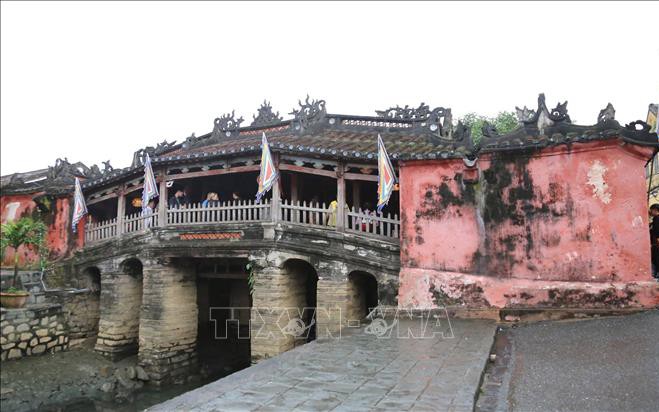




![[Photo] Top players gather at the 2025 Nhan Dan Newspaper National Table Tennis Championship](https://vphoto.vietnam.vn/thumb/1200x675/vietnam/resource/IMAGE/2025/5/23/9ad5f6f4faf146b08335e5c446edb107)





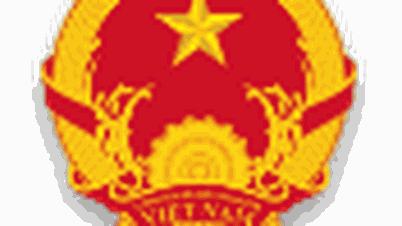

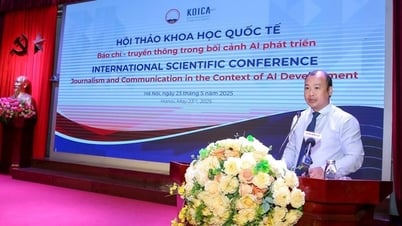




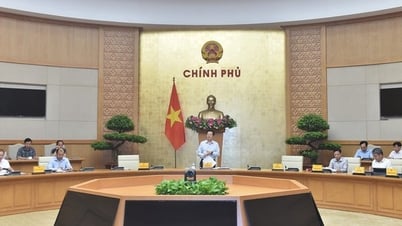
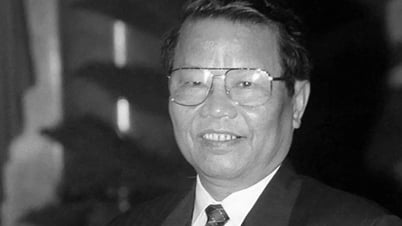


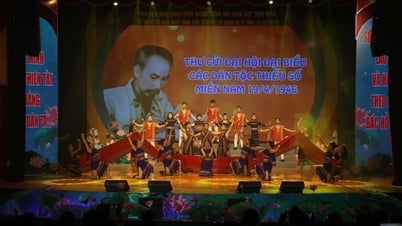













































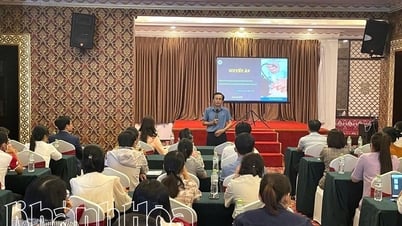


![[PHOTO] Green bamboo hills of A Lu](https://vphoto.vietnam.vn/thumb/402x226/vietnam/resource/IMAGE/2025/5/23/0289501c5a834422bd096f1f62b5c8e4)

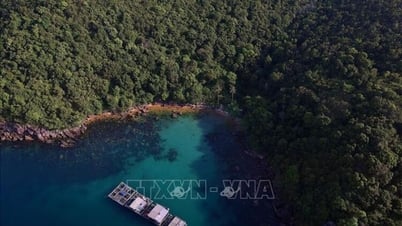












Comment (0)